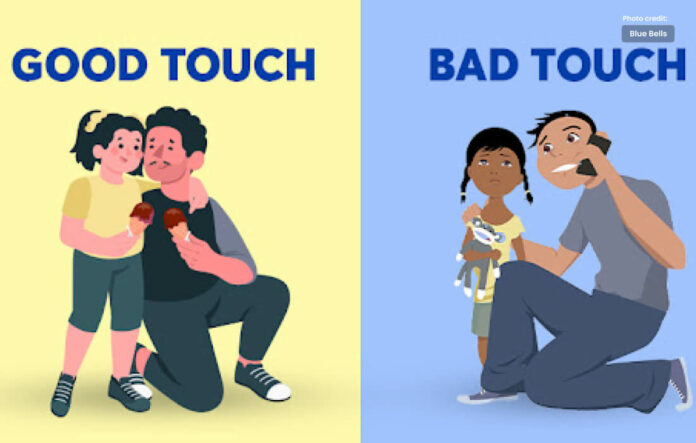Teach kids to differentiate between good and bad touch for protection.
Discover how to protect your child by understanding the key differences between good and bad touch. Get helpful advice on creating a secure atmosphere for your kids in our extensive blog, which will empower you as a parent.
Describe Good vs Bad Touch
It’s essential to recognize the difference between appropriate and inappropriate touch when setting up a secure atmosphere for your child.
Hugs, kisses, and light pats are examples of nice, comforting, and appropriate physical contact that is referred to as “good touch.”
These interactions support a child’s emotional growth and welfare. Conversely, inappropriate or damaging physical contact that causes discomfort, fear, or anxiety in a child is referred to as poor touch.
It is essential to have an open line of communication with your child and teach them the difference between the two.
Starting Discussions with Your Kids
Maintaining an atmosphere of safety for your child requires open communication. Start age-appropriate dialogues with them about proper and inappropriate touch to make sure they know the difference.
Encourage children to voice their emotions and worries without worrying about being judged. Building trust through dialogue can enable your child to voice their concerns if they ever feel uncomfortable or come across something that unnerves them.
Teaching Limits and Consent
From an early age, provide your child the tools to comprehend personal boundaries and the idea of permission.
Emphasize that their comfort and sentiments are valid and teach them to identify and respect their boundaries.
Remind them how important it is to say “no” when something doesn’t seem right and give them confidence that speaking up is acceptable.
You may give your child the confidence to confidently navigate social encounters by establishing these ideas in them.
Recognizing Danger Signals
Learn to recognize the telltale indicators that could mean your child has been in an uncomfortable situation.
Red flags include altered behavior, withdrawal, or an unexpected fear of a certain person. If your child shows any odd physical complaints or symptoms of discomfort, pay attention to them.
Being watchful helps you prevent injury to your child and deal with possible problems quickly.
Establishing a Helpful Environment
Create a nurturing atmosphere where your child feels at ease talking about their feelings and experiences.
Invite them to tell you about their day, their friends, and any worries they may have. You build trust by being approachable and nonjudgmental, which increases the likelihood that your child may confide in you in the event that they experience inappropriate touching
Teaching Your Kids About Proper and Inappropriate Touch
Teach your child about safe and unsafe touches using terminology that is appropriate for their age. Reiterate the idea that they own their body and that no one should cause them discomfort.
Give them illustrations of improper touching and give them the confidence to express their boundaries in an authoritative manner. Your child will gain the ability to defend oneself in a variety of circumstances by learning self-advocacy.
Clearly Outlining the Rules
Both in your home and in social situations, clearly define your rules on physical limits. Instill in your child the value of recognizing and defending their own boundaries in addition to respecting those of others.
This fosters a respectful and empathic culture in addition to encouraging a sound awareness of personal space.
Keeping an eye on interactions on the internet
It’s crucial to keep an eye on your child’s internet activities in the modern digital world. Inform them of the possible dangers of acting inappropriately online and offer advice on how to set and uphold personal boundaries in virtual environments. Participate in their internet activity and set guidelines to protect their safety.
Promoting Reporting and Asking for Assistance
Tell your child that they can talk to you about any issue, no matter how small, at any time. Reiterate that reporting uncomfortable situations won’t have any negative consequences and that asking for assistance is a sign of strength.
Create a network of dependable individuals that your child can contact in case they ever feel unsafe, such as instructors or close family friends.
Conclusion
Vigilance, education, and open communication all play a part in protecting your child. Your child will be more equipped to confidently navigate the world if you teach them the subtle differences between good and terrible touch.
Create a secure and nurturing atmosphere where your child may express themselves and feels respected, recognized, and heard. As parents, we can work together to build a world in which our kids feel safe and capable.
Also read this: How your Child can Lead a Successful and Prosperous Life




